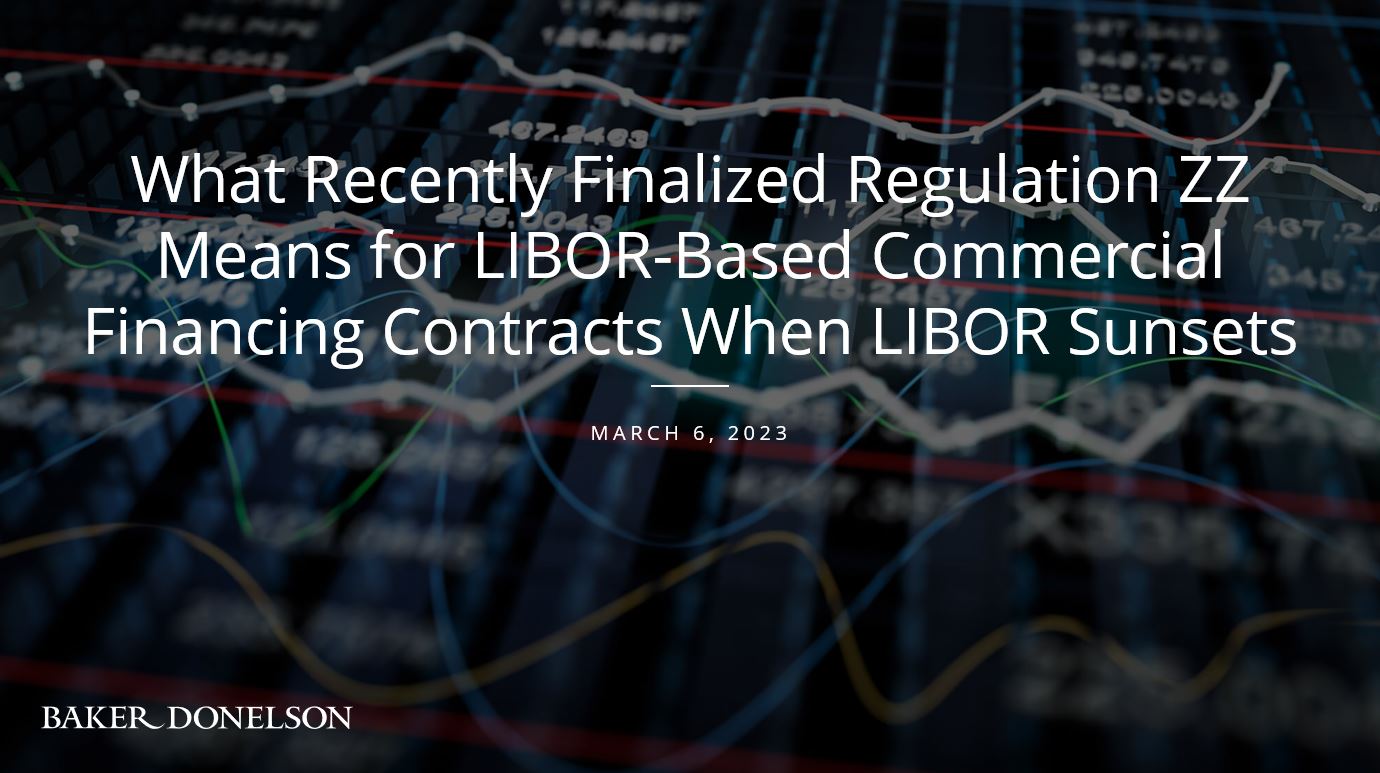Regulation Zz : What it is
Regulation ZZ: An Overview As the financial landscape continues to evolve, regulations play a crucial role in ensuring stability and transparency within the industry. One such regulation that has gained significant attention is Regulation ZZ, also known as the Truth in Lending Act (TILA). In this article, we will delve into the key aspects of Regulation ZZ, its importance, and its impact on tough legacy contracts during the LIBOR transition. So, let's explore this regulation in detail. 1. Understanding Regulation ZZ Regulation ZZ is a federal regulation implemented under the TILA, which is administered by the Consumer Financial Protection Bureau (CFPB). Its primary objective is to provide protection to consumers by mandating clear and comprehensive disclosure of credit terms in a standardized manner. By ensuring that consumers understand the costs and risks associated with credit transactions, Regulation ZZ promotes financial literacy and facilitates informed decision-making. 2. The Transition from LIBOR and Regulation ZZ As the LIBOR benchmark is being phased out by the end of 2021, financial institutions and market participants have been working tirelessly to transition to alternative reference rates. During this transition, Regulation ZZ's impact on tough legacy contracts cannot be overlooked. The CFPB has recently proposed rules to address the challenges posed by this transition, in what is widely known as Proposed Regulation ZZ's LIBOR transition rules for tough legacy contracts. 2.1 Proposed Regulation ZZ and Tough Legacy Contracts Tough legacy contracts refer to financial contracts that are not easily amendable or capable of transitioning to alternative reference rates without significant operational and economic challenges. To aid the transition, Proposed Regulation ZZ provides temporary relief for certain aspects of Regulation ZZ that may otherwise hinder contract amendments and modifications. This enables financial institutions to effectively address the issues arising from the discontinuation of LIBOR without running afoul of existing regulatory requirements. 2.2 Key Provisions of Proposed Regulation ZZ Under Proposed Regulation ZZ, certain disclosure requirements and procedural obligations imposed by Regulation ZZ will be temporarily relaxed for legacy contracts deeply affected by the LIBOR transition. This temporary relief aims to strike a balance between ensuring consumer protection and facilitating a smooth transition away from LIBOR. Financial institutions will need to thoroughly evaluate the applicability and eligibility criteria outlined in Proposed Regulation ZZ to benefit from the relief measures. 3. How will Proposed Regulation ZZ Impact Market Participants? Market participants, including financial institutions, borrowers, and investors, should closely monitor the developments related to Proposed Regulation ZZ. Some key aspects to consider include: 3.1 Enhanced Flexibility for Contract Amendments Proposed Regulation ZZ provides flexibility for financial institutions to amend tough legacy contracts without triggering significant regulatory hurdles. This allows market participants to adapt their contracts to alternative reference rates seamlessly, in line with industry best practices. 3.2 Temporary Modification of Disclosure Requirements Certain disclosure requirements mandated by Regulation ZZ may pose challenges during the transition. Proposed Regulation ZZ aims to temporarily relax these requirements to alleviate the burden on market participants and enable efficient contract modifications. 3.3 Monitoring Compliance Obligations While Proposed Regulation ZZ provides temporary relief, it is crucial for financial institutions to continue monitoring their compliance obligations under both Regulation ZZ and the proposed rules. Failure to adhere to the regulatory standards can have severe legal and reputational consequences. FAQs Q1. What is the purpose of Regulation ZZ? A1. Regulation ZZ aims to protect consumers by ensuring transparent disclosure of credit terms, promoting financial literacy, and facilitating informed decision-making. Q2. What are tough legacy contracts? A2. Tough legacy contracts refer to financial contracts that face significant operational and economic challenges in transitioning away from legacy benchmarks like LIBOR. Q3. How does Proposed Regulation ZZ facilitate the LIBOR transition? A3. Proposed Regulation ZZ provides temporary relief from certain disclosure requirements and procedural obligations, enabling market participants to address the challenges posed by the LIBOR transition. In conclusion, Regulation ZZ plays a fundamental role in promoting transparency and protecting consumer interests in credit transactions. With the proposed LIBOR transition rules under Regulation ZZ, market participants can navigate the complexities of legacy contracts during this critical period. As the financial landscape continues to evolve, it is imperative for financial institutions and market participants to stay abreast of regulatory developments and adapt their practices accordingly to ensure a smooth and compliant transition.  Image Source : www.eric1688.com
Image Source : www.eric1688.com  Image Source : www.hawkins.com
Image Source : www.hawkins.com  Image Source : www.researchgate.net
Image Source : www.researchgate.net  Image Source : www.eyeonibor.com
Image Source : www.eyeonibor.com  Image Source : www.bakerdonelson.com
Image Source : www.bakerdonelson.com  Image Source : www.researchgate.net
Image Source : www.researchgate.net  Image Source : www.thompsoncoburn.com
Image Source : www.thompsoncoburn.com  Image Source : www.weita.ch
Image Source : www.weita.ch
015Z8.2-X Zener Diodes 8.2V 200mW/0.2W SOD523/0603-8.2V Marking 82
Federal Reserve Regulation ZZ Implementing The Adjustable Interest Rate
Proposed Model For PKB/Akt Regulation By Receptor Tyrosine Kinases
 Image Source : www.researchgate.net
Image Source : www.researchgate.net Fed Adopts Final Rule Implementing The Adjustable Interest Rate (LIBOR
 Image Source : www.eyeonibor.com
Image Source : www.eyeonibor.com What Recently Finalized Regulation ZZ Means For LIBOR-Based Commercial
 Image Source : www.bakerdonelson.com
Image Source : www.bakerdonelson.com Establishment Of A Lentivrius Mediated Gene-modulating Method In Turtle
 Image Source : www.researchgate.net
Image Source : www.researchgate.net Proposed Regulation ZZ’s LIBOR Transition Rules For Tough Legacy Contracts
 Image Source : www.thompsoncoburn.com
Image Source : www.thompsoncoburn.com Papierhandtücher Tork Advan.H3 - Papierhandtücher - Weita AG
 Image Source : www.weita.ch
Image Source : www.weita.ch Fed adopts final rule implementing the adjustable interest rate (libor. What recently finalized regulation zz means for libor-based commercial. Proposed model for pkb/akt regulation by receptor tyrosine kinases. 015z8.2-x zener diodes 8.2v 200mw/0.2w sod523/0603-8.2v marking 82. Establishment of a lentivrius mediated gene-modulating method in turtle